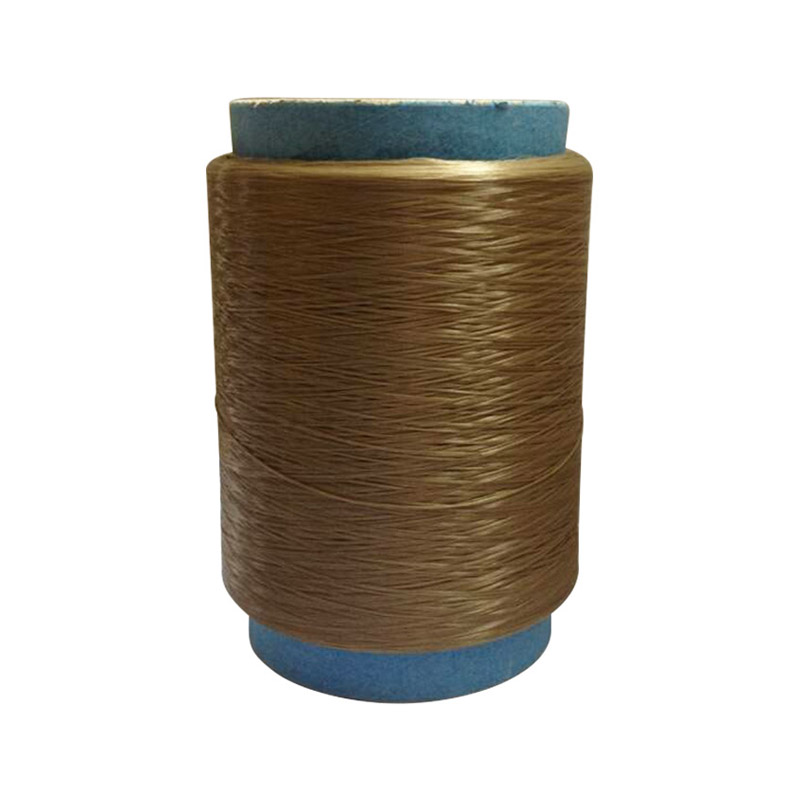The Manufacturing Process and Sustainability of 300D PP Yarn
2025-01-13
In the world of textiles and industrial fabrics, polypropylene (PP) yarn plays a crucial role due to its lightweight, durable, and resistant properties. 300D PP Yarn is one of the most commonly used variants in both the consumer and industrial sectors. As sustainability becomes a more significant concern in manufacturing, it's essential to understand not only the benefits of 300D PP yarn but also the environmental implications and how the industry is evolving towards greener practices. This blog will explore the manufacturing process of 300D PP yarn, its sustainability challenges, and efforts to make it more eco-friendly.
The Manufacturing Process of 300D PP Yarn
The production of 300D PP yarn is a multi-step process that begins with the polymerization of polypropylene and ends with the creation of durable, high-performance yarn. Here’s a breakdown of the key steps involved:
1. Polymerization: The first step in the production of polypropylene yarn is the polymerization of propylene gas. In this process, propylene monomers are chemically bonded to form a long-chain polymer. The polypropylene resin that results is then ready for the next step.
2. Melt Extrusion: The polypropylene resin is melted at a high temperature and forced through a spinneret to form long filaments. These filaments are then cooled and solidified as they exit the extrusion process.
3. Drawing and Stretching: After extrusion, the filaments undergo a process called drawing. This involves stretching the filaments to increase their strength, elongation, and uniformity. The drawing process also improves the overall appearance of the yarn.
4. Twisting and Spinning: The individual filaments are twisted together to form a cohesive yarn. For 300D PP yarn, the twisting process ensures that the yarn has the right amount of strength and texture for its intended use.
5. Finishing: In this final stage, the yarn may be treated with finishing agents like anti-UV or water-repellent coatings, depending on the intended application. Some manufacturers may also use heat-setting techniques to stabilize the yarn and improve its performance under different conditions.
Sustainability Challenges of 300D PP Yarn
Polypropylene yarn, like many synthetic fibers, has faced sustainability challenges due to its reliance on petrochemical-based raw materials and the environmental impact of its production processes. Some of the key sustainability issues related to 300D PP yarn include:
1. Energy-Intensive Production: The process of producing polypropylene yarn is energy-intensive, particularly the extrusion and drawing stages. This contributes to high carbon emissions, making it less eco-friendly compared to natural fibers like cotton or wool.
2. Non-Biodegradable: Polypropylene, like most synthetic fibers, is non-biodegradable. This means that products made from PP yarn, such as packaging materials and textiles, can take hundreds of years to break down in landfills, leading to increased plastic waste.
3. Microplastics: As with other synthetic fibers, PP yarn can shed small particles known as microplastics during production, usage, and washing. These microplastics can find their way into the environment, contributing to pollution in oceans and waterways.
Sustainable Alternatives and Innovations
Despite these challenges, there have been several efforts to make 300D PP yarn and other synthetic fibers more sustainable:
1. Recycled Polypropylene: One of the most significant innovations is the use of recycled polypropylene (rPP) to produce new yarn. By using recycled PP from post-consumer or post-industrial waste, manufacturers can reduce the need for virgin raw materials and help divert
plastic waste from landfills.
2. Energy-Efficient Production: Manufacturers are increasingly adopting more energy-efficient technologies and processes, such as using renewable energy sources or improving the efficiency of the extrusion and drawing stages to lower carbon emissions.
3. Biodegradable Coatings: Some companies are working on developing biodegradable coatings for PP yarn, which would help reduce the environmental impact when the yarn is disposed of or recycled.
4. Closed-Loop Systems: In a closed-loop system, polypropylene waste is collected, recycled, and reprocessed into new yarn. This helps create a more circular economy, reducing the need for raw materials and minimizing waste.
5. Eco-Friendly Dyeing: Traditional dyeing processes are often water- and chemical-intensive. However, eco-friendly dyeing methods using fewer resources and safer chemicals are becoming more widespread in the industry.
300D PP yarn is a valuable material in a wide range of industries, from consumer goods like bags and clothing to industrial applications like geotextiles and packaging. However, the sustainability challenges associated with its production and disposal are significant concerns. Fortunately, advancements in recycling, energy efficiency, and biodegradable alternatives are paving the way for a more sustainable future in the production of PP yarn. As the industry continues to evolve, the adoption of eco-friendly practices will help reduce the environmental impact of 300D PP yarn and similar synthetic fibers.



